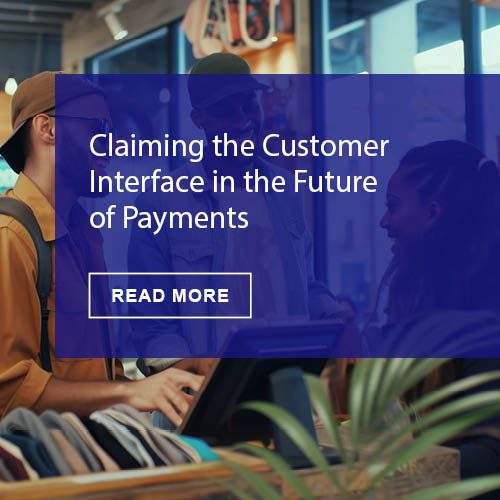How technology is transforming how we pay, and what it means for your business
It is the year 2022. Sally the Road Warrior is Skyping with a customer. Sally works for a tech company – who doesn’t, in 2022? She decides her customer could benefit from an in-person meeting. Sally enters this wish into her Customer Relationship Management (CRM) tool and moves on with her day.
The CRM tool connects to Sally’s calendar, which automatically corresponds with the customer’s calendar to find a good date. A virtual “assistant” then purchases an airline ticket using a virtual charge account number, and reserves a hotel with a separate virtual number (both bookings comply with company travel policy). When she lands in town, Sally catches a ride-share, which already has the address to the restaurant where they will meet, along with the driver’s payment, in the form of another virtual account number. After a pleasant meal with her customer, there is no awkwardness or battle for the bill as it has already been paid for by yet another virtual account number.
Best of all, when Sally gets back to the office, there is no expense report to create. Since each transaction was pre-approved and had all the appropriate details, the report is complete without any additional input from her.
A far-fetched scenario? I don’t think so. At some point, sooner than many think, cardless or “virtual” payments will be commonplace. Further, payments will become integrated in seamless systems that require humans to oversee, but not get bogged down in managing. It will be a world in which the “pain” of card payments will vanish.
“Unknown Pain”
Wait a minute. Paying by charge card involves “pain?” Since when is reaching into one’s pocket or purse to pull out a piece of plastic a burden?
That’s the funny thing about progress. It often addresses inconveniences we didn’t see as inconvenient until a better way came along.
I’ll use one of my own childhood memories to illustrate.
When I was a kid and I wanted to learn about a cool rock I found, my mom and I would go to the library. Imagine…a world of knowledge in a single building! Later my parents bought an encyclopedia. Now a world of information was right at my fingertips. Then the birth of the internet – infinite expanses of information and no need to page through books to find it. Clearly I had hit the ultimate in knowledge access! And yet, I have since gained a mobile phone, so I can take that world of knowledge with me. Even more recently, I’ve been joined by virtual assistants on my phone and in my kitchen, who can answer any question on a whim.
Unknown pain is only recognized once you get to the next level of ease and have the benefit of hindsight.
When the charge card concept launched almost 70 years ago, it was a delightfully simple, less painful way to handle sign-now-and-pay-later purchasing. In the commercial space, cards quickly caught on, especially for business travelers. As card products evolved, credit card issuers developed tighter controls and produced deeper data. This made it less painful for employers to promote compliance with their spending policies.
Throughout its evolution, the fundamental components of a card payment have remained largely unchanged. Until now.
Three game-changers transforming the payment game
Three trends are now converging to transform the payments space: mobile adoption, connectedness and artificial intelligence (AI).
Global adoption of mobile payments has been slower than expected, but is picking up some steam, with some industry observers predicting that mobile and contactless payments will overtake plastic by 2020.
Connectedness is advancing nearly as fast. Think of your phone, your email, your calendar and your other online work tools. Today almost all of these are “in the cloud,” and the cloud is nearly ubiquitous. The next step is to connect them all, to proactively save you time. No longer would you need to create multiple entries in multiple systems — a single entry could connect to all relevant systems.
That means that all your relevant data would effectively reside in one place, and that’s when artificial intelligence can strut its stuff. For our human brains, there’s danger of information overload from too much data, but machines — specifically AI –thrive on it. The more data they have, the better they can be in looking for patterns and insights, and learning from your actions to anticipate your next need.
Re-imagining business payment and reporting
What happens if we combine these three trends – mobile adoption, connectedness and artificial intelligence? We get a meeting arranged, paid for and reported based on a single entry in Sally the Road Warrior’s CRM tool. We also get job candidates flying in for interviews without needing to fill out expense reports, because you’ve texted them an app that manages the entire trip end-to-end. We even get instant answers when we turn to our Alexa-like device in the office and ask, “How much did we spend on airfare last quarter?” or “What’s the year-over-year cost for our plant in Boise?”
The traditional commercial card will gradually shed its plastic form, and card issuers like U.S. Bank are committed to supporting their current and future customers as the ascendance of virtual tools enables us to re-envision the end to end travel and procurement experience
We are at the precipice of a future driven by mobile adoption, connectedness and artificial intelligence. When we get there, we can look back and recognize that we’ve been freed from our unknown pain.











